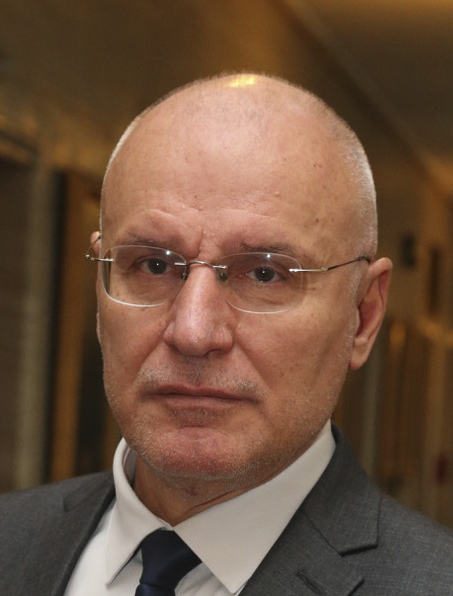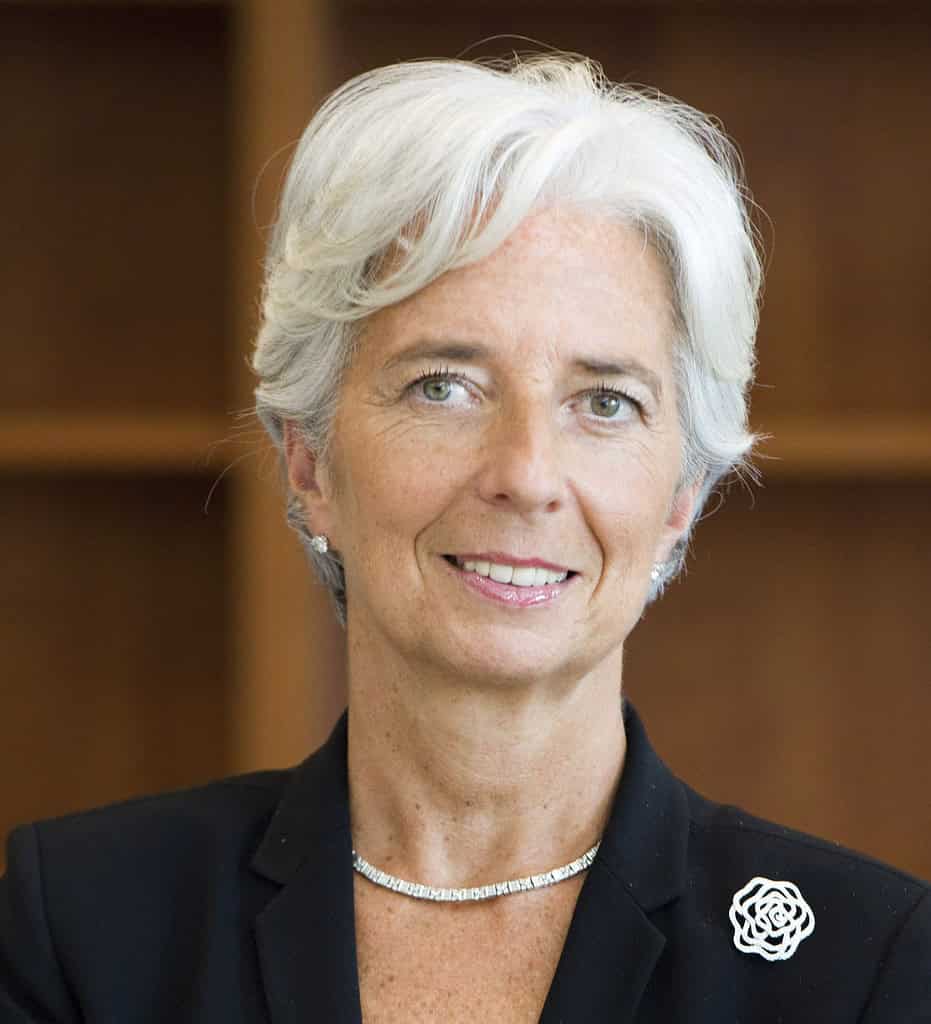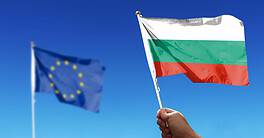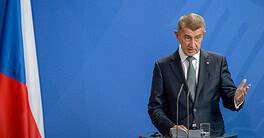Belarus
Pavel Kallaur: N/A
With Belarus’ economy increasingly integrated into that of Russia, it makes perfect sense for the National Bank of the Republic of Belarus (NBRB) to proceed with plans to introduce a digital Belarusian ruble linked to the Russian currency. Although plans at the time of writing are sketchy, it is understood transactions will be classified as noncash settlements. However, Chairman Pavel Kallaur has said that other steps will be taken to improve the economy’s overall efficiency and maintain the high levels of bank lending.
“To form a stable resource base for banks necessary to expand lending, measures will be taken to develop the long-term deposit market, as well as to increase the share of ruble savings,” he said in a speech before Parliament in late June.
This lending is helping to boost GDP growth, which was 3.9% in 2023. The government expects it to be around 3.4% this year, although the International Monetary Fund (IMF) is forecasting a more modest 2.4%.
This year, Kallaur marks 10 years as governor of the NBRB, during which he has worked closely with the country’s president, Alexander Lukashenko. Price controls have remained on certain goods monitored by the NBRB, while keeping a close eye on inflation is given high priority. The inflation target for 2021-2025 is 5%, and the IMF expects the rate to reach 6.3% this year, going up a little to 6.5% for 2025.
Bosnia and Herzegovina
Jasmina Selimović: Too Early To Say
On January 3, Jasmina Selimović was appointed as the new Governor of the Central Bank of Bosnia and Herzegovina (CBBH) for a six-year term. She replaced Senad Softić, who had extended by three years his official six-year term started in 2015. Early signs are that the new governor aims to continue Softić’s reliable stewardship of monetary policy. In her inaugural speech, Selimović stressed the need for stability and a continued striving for transparency, reiterated in her first meetings with officials of the European Union and the IMF.
Monetary policy in Bosnia and Herzegovina has been stable for a long time, with a currency board in place for more than a quarter of a century, and no change is expected. Selimović emphasizes the need for the currency, the convertible mark, to remain stable and convertible—prerequisites for financial stability and economic prosperity. Macroeconomic fundamentals have improved recently, with real GDP growth expected by the IMF to accelerate in 2024-2026 from 2.5% to 3%, a bit higher than forecast by CBBH six months ago. Inflation is projected to ease from an average of 3% in 2024 to 2.7% next year. There are plans—but no clear timetable—for Bosnia and Herzegovina to join the Single Euro Payments Area, dramatically reducing the cost of sending money to and from the EU.

Bulgaria
Dimitar Radev: B
The June 2024 European Commission convergence report confirmed further progress toward eurozone membership, the expected culmination of decades of alignment with EU standards and policies. The main sticking point now appears to be inflation. Harmonized consumer price inflation in May (5.1%) exceeded the ECB’s tolerance threshold (3.3%). Over the coming months, the expected narrowing of the gap may prompt the caretaker government (resulting from inconclusive parliamentary elections) to request another impromptu official assessment soon. However, clearing the inflation hurdle may prove difficult and elusive.
Like the EU, Governor Dimitar Radev of the Bulgarian National Bank (BNB) is concerned about longer-term price pressures emanating from an expansive fiscal policy. He has stressed the need for “a pro-European government with a sufficiently broad support and action horizon,” with both issues clearly linked. In that respect, progress has gone into reverse. As the June 2024 parliamentary elections produced an inconclusive outcome, a return to the polls is scheduled for October. It will be the seventh parliamentary election since 2021. The political malaise and institutional stalemate may also explain the delay in finding a successor for Radev, whose original six-year term ended in July 2021. In 2023, he was reappointed for another six years. Radev’s longevity may yet prove beneficial in a fluid political situation.
Czech Republic
Aleš Michl: B+
The Czech National Bank (CNB) has a reputation as one of the most conservative in the region, and its cautious actions over the past year have been consistent with this. Having presided over a rise in interest rates over 2022-2023 to counter inflationary pressures, it has since overseen a fall in rates to 4.25% by September 2024.
Given that its main priority is price stability—with a target range of 1%-3% for inflation—the CNB under Governor Aleš Michl can be happy with the outcome. By June 2024, inflation was 2%, down from May’s 2.6% and below market expectations. Since then, it has stabilized at 2.2% over July and August. Michl expects it to remain stable this year and into next, led by falling food and drink prices, among other things. This should enable a further gradual easing of interest rates by year-end.
Michl sees price stability as the cornerstone of a broader economic strategy incorporating a pragmatic fiscal policy, reflecting the Czech Republic’s close integration with the eurozone and Germany (despite remaining outside the euro). He seems well aware of the challenges facing the country. These include relatively anemic growth—just 0.7% at best expected this year, rising to 2% in 2025—but also accelerating real wages and labor shortages, which could be an inflationary trigger. Monetary policy will need to be responsive to this reality.
Denmark
Christian Kettel Thomsen: A+
The central bank of Denmark (Nationalbanken), hit its 2% inflation target without more-significant economic deceleration in 2024. Following the lead of the European Central Bank (ECB) on interest rates to prevent currency devaluation, the country started its monetary easing cycle in June, cutting interest rates by 0.25% then and again in September.
The country’s most recent numbers signal a stable overall economic outlook, with inflation at 1.4% in August and annual GDP growth projected at 2.1%. Unemployment, however, rose slightly from a steady 2.5% to 2.6% as of July. One of the main secrets behind the country’s above-average performance is a sustained increase in employment, resulting in upward revisions of growth forecasts and a more substantial budget surplus.
The country’s economy was significantly boosted by its thriving pharma industry, with Bagsværd-based global leader Novo Nordisk becoming Europe’s largest company by market cap in early 2024.
In a June announcement, Nationalbanken says that the current “economic progress raises expectations for the Danish economy in 2024.”

European Union
Christine Lagarde: A-
Christine Lagarde’s term at the ECB’s helm has significantly shifted for the better in 2024.
After a difficult 2023, when geopolitical pressures gathered with tight monetary conditions to create a near-stagflationary environment in the eurozone, the central bank has managed to inch much closer to its 2% target with successive consumer price index (CPI) readings under 3% since February of this year, down to 2.4% in August.
Against the improving backdrop, Lagarde seemed to have anticipated the US Federal Reserve’s September rate cut by starting its easing cycle in early June, lowering the eurozone’s interest rate by 25 bps to 4.25% and then in September to 3.65%.
Lagarde had left rates unchanged in July and August due to the potential devaluation of the euro currency against the US dollar.
Nonetheless, the new monetary cycle has already impacted the ECB’s GDP expectation for the euro area, which is now projected by the IMF to grow 0.8% in 2024 and 1.5% in 2025, significantly better than 2023’s 0.4%.
On the inflation front, the ECB has already gone below its 2.5% projection for 2024 and now projects it at 2.2% in 2025.
Georgia
Natia Turnava: D
Acting head of the National Bank of Georgia (NBG) since June 2023, amid controversy over what was regarded as a highly political appointment, Natia Turnava has yet to be formally appointed governor. But that has been the least of her problems, as she and the NBG have been dragged into Georgia’s increasingly bitter political divisions.
Questions were raised over her judgment in September 2023, when she failed to enforce international sanctions on Georgia’s former prosecutor general Otar Partskhaladze—who has close connections to Russian President Vladimir Putin—claiming that the freezing of a Georgian individual’s assets could be enforced domestically only by a Georgian court. Her controversial stand led to three top-level resignations from the NBG and a rebuke from Georgian President Salome Zurabishvili, who called on her to resign.
Turnava has also been obliged to spend foreign currency to prop up the lari last May, despite fierce opposition from all other political parties, the president, and the EU, which subsequently suspended membership negotiations with Georgia. This was at the height of antigovernment demonstrations against the country’s so-called foreign agents law. According to Fitch Ratings, international reserves dropped from a peak of $5.4 billion in August 2023 to $4.6 billion in June of this year, that decline beginning soon after the start of Turnava’s tenure.
She has done nothing to dispel concerns about her conduct last September, and her closeness to the governing Georgian Dream party has undermined confidence.
In June, Fitch Ratings warned that “perceived risks to the independence of the NBG could erode policy credibility, potentially weakening the capacity of Georgia’s small, open and dollarized economy to respond to external shocks.”
As regards monetary policy, the NBG has followed a broadly tight strategy, with rates cut to 8% in May, against inflation of 2% at that time, although high levels of dollarization impact policy transmission. Inflation peaked at 2.2% in June, then subsided to 1% by August.
Hungary
György Matolcsy: B-
The reputation of the central bank of Hungary—the Magyar National Bank (MNB)—took a battering last year, and that of its governor as well. Hungary had high inflation—25.7% at its peak. The full year of 2023 saw a GDP contraction of 0.9%. Criticism of the MNB’s complex interventions was also rife, with observers saying they complicated monetary policy and often simply did not work.
The governor’s term in office finishes in early 2025, and 2024 has been quieter than 2023, with inflation and interest rates returning to normal ranges. Average inflation this year is expected by the IMF to be 3.7% against 17.1% last year; while interest rates have fallen sharply, by half, from 13% in October 2023 to 6.50% in September 2024. Growth is projected at 2.2% in 2024, going up to 3.3% next year. Governor György Matolcsy seems unlikely to make many more interest cuts this year.
“The pace of cuts is set to slow over the remainder of 2024, with the central bank emphasizing the importance of positive real rates and stability of the financial markets,” wrote Fitch in its June 2024 report on Hungary.
However, Matolcsy—a former close ally of Prime Minister Viktor Orbán who fell out with him in early 2024 over Orbán’s plans to increase government oversight of the MNB, which the governor said would compromise its independence—may yet surprise markets. With Matolcsy and the government blaming each other for Hungary’s poor economic performance, and with discussions over the oversight laws due to resume in the autumn, further interest rate cuts could happen, as Matolcsy will likely want to leave the MNB in 2025 on a high note.
Iceland
Ásgeir Jónsson: B
While most central banks around Europe have already begun to inch closer to their inflation targets, the Central Bank of Iceland continues to lag.
In its latest inflation estimate, in August, the Nordic island’s CPI inflation marked a hefty 6%, still nowhere close to the central bank’s 2.5% on-average target.
After a 4.1% year-on-year jump in GDP for 2023, the country posted a meager 0.6% quarter-on-quarter growth in February and a desolating -4% in May.
In its August statement, the central bank expects the battle against inflation to continue: “The current monetary stance is sufficient to bring inflation back to target, but persistent inflation and strong domestic demand call for caution.”
Norway
Ida Wolden Bache: A-
The central bank of Norway, Norges Bank, has continued to march toward its 2% inflation goal, albeit facing growing signs of a broader economic deceleration.
In its most recent CPI report, the Nordic country posted prices that continued to moderate, at 2.6% in August.
Despite that, the country hasn’t started to cut rates, maintaining a fairly strict 4.5% policy rate, the high point that was reached in December, 1.9% in real terms.
After a positive 2023 for the country, the tight monetary stance has started to affect the broader economy. According to the latest readings, GDP in Q2 jumped to 4.2% from Q1’s 0.9%, while unemployment had dropped to 3.8% in July, but grew again to 4% in August.
Matthew Schneider, an economist at Moody’s Analytics, believes we’re still far from seeing a pivot from the central bank. “After pushing back our expectations for the timing of these cuts to September, hawkish language from the committee today suggests that rate cuts may come even later than anticipated,” Schneider explains.
Poland
Adam Glapiński: C
National Bank of Poland (NBP) Governor Adam Glapiński, 74, who started his second term in 2022, has presided over an inflationary environment that decreased and increased again over 2024. The CPI, which the IMF estimates at 11.4% for 2023, is projected to fall to 5% for this year, remaining at that level in 2025, above the target of 1.5%-3.5%. Growth has returned to the economy, too, with GDP expected by the IMF to rise 3.1% this year against 0.2% in 2023.
In June, Glapiński appeared to take a firm line against inflation—sustained by high energy prices, the imminent removal of a price gap, and continuing wage pressures—saying there is no chance of a cut in the current 5.75% rate this year or even next. However, as Fitch Ratings points out, he faces a difficult balancing act.
The past year has been an uncomfortable one for Glapiński and the NBP. Prime Minister Donald Tusk, who swept into government for the second time in the October 2023 elections, has accused Glapiński of politicized policymaking because of his controversial decision to drop interest rates by 0.75% to 6% in September, ahead of the October vote, despite an unpropitious environment with high inflation.
Glapiński—who was appointed by the previous Law and Justice Party (PiS) government and is a personal friend of its chairman, Jarosław Kaczyński—denies the accusations; but, at the time of writing, he could still face government prosecution despite the constitutional court ruling in January that the governor of the National Bank of Poland cannot be put in front of a tribunal.
Romania
Mugur Isărescu: B+
You don’t get to remain a highly respected central bank governor for well over 30 years without being a survivor, and Mugur Isărescu, 75, has proved that over the past year. He has been governor of the National Bank of Romania since 1990—except for an 11-month hiatus as prime minister from 1999 to 2000—and has been cautious. The world’s longest-serving central bank governor is expected to be given another five-year term in a vote scheduled this fall. His recent record has been solid.
According to ING, most forecasts suggest this year will see an increase in GDP of between 2.5-3%, with total GDP expected to double over the next decade. Isărescu’s concern, however, is that although food and fuel prices have fallen since 2023, inflation remains sticky with the price of services, rising real wages, strong demand for imports, and continuing expansionary fiscal policy all possible triggers for this persisting into next year at around 4.5%-5%.
However, after a slight drop in inflation to 5.1% in May, July saw a reduction of 25 basis points to 6.75% and another 25 bps cut in August, to 6.5%, hinting that any subsequent reductions later in the year would be equally small. Isărescu maintains that it is best to err on the side of caution rather than having to reverse any interest rate cuts later.
Sweden
Erik Thedéen: A-
Despite hitting 1.9% in its August inflation read, thus approximating the 2% target inflation rate, the latest batch of economic data paints an increasingly worrisome picture for the historically solid Swedish economy.
Unemployment was down to 7.9% in August, from a high of 9.4% in June; and first-quarter GDP rebounded to 0.7% from a -0.1% drop in Q4 2023. Pressure on the Riksbank to deepen its rate cut cycle, which started in May this year with a cut to 3.75% from 4.00%, is growing by the day.
Against the worrisome backdrop, Governor Erik Thedéen brought the policy rate further down, to 3.5% in August and 3.25% in September, saying that he saw the Riksbank cutting two or three more times this year.
“I see it as more likely that we will be able to make three—rather than two—full rate cuts so that the policy rate amounts to 2.75 per cent after the December meeting,” said Thedéen at the time of the August cut.
Switzerland
Thomas Jordan: A+
The first major central bank to cut rates in 2024, the Swiss National Bank (SNB), has kept setting the trend for the rest of the developed world by achieving a perfect balance between economic growth and inflation.
Despite lowering the SNB’s benchmark rate to 1.25% at its June meeting—its second 25 bps rate cut of the cycle—Governor Thomas Jordan still delivered an impressive streak of inflation readings under 1.5% this year, sustainably below the bank’s 2% target. The SNB cut another 25 bps in September.
And if that weren’t enough, the milestones were accompanied by an impressively low unemployment rate, 2.4% in August, which displayed the overall resilience of the country’s economy.
The main worry now lies on the GDP front, where the country had recorded successive quarter-on-quarter readings below 0.5% since the third quarter of 2022, rising above that to only 0.7% in this year’s second quarter. But the SNB should have space for further rate cuts this year, and the bank’s next governor, Vice Chairman Martin Schlegel who will start Oct. 1, said he would stick with the bank’s price stability goals.
Turkey
Fatih Karahan: Too Early To Say
Fatih Karahan, who took over as governor of the Central Bank of the Republic of Turkey (CBRT) on February 3, has shown even greater determination than his short-lived predecessor—Turkey’s first female governor, Hafize Gaye Erkan, who left for several reasons, including personal—to bring inflation to heel. The complex web of unorthodox financial regulations imposed over the past few years has been dismantled. Karahan has been working closely with respected Finance Minister Mehmet Simsek to present a united policy front and reassure markets. In six years, Turkey’s sixth central bank governor has been at pains to stress that mainstream monetary policy will now be the order of the day.
That said, Turkey’s biggest problem—inflation—shows little sign of being defeated, though it has come down to 49.38% as of Septemeber, from its high of 75.45% in May. Meanwhile, interest rates have been at 50% since March, after nine consectutive increases. These stratospheric rates have left the relatively low rates of the unorthodox, pre-Erkan era behind, when the key rate stood at 8.5% prior to June 2023. These rates have attracted large inflows of foreign fare unds, with the Turkish lira becoming the most-traded emerging market currency in mid-2024. Around $12.5 billion has also been attracted by Turkish government bonds.
However, the CBRT insists that inflation will continue to fall substantively throughout 2024 and into 2025. For this reason, fiscal policy is also being overhauled, with Simsek announcing a comprehensive new corporate tax regime in July 2024 to complement further monetary tightening.
At the CBRT’s May rate-setting meeting, the bank announced a series of liquidity tightening measures—including foreign exchange–protected deposit accounts and new higher reserve requirements for the lira—aimed at supporting the bank’s tight money policy, which it said would continue until there were clear evidence of a substantive fall in inflation and inflationary expectations. For 2024, the IMF forecasts inflation to drop from 38.4% in 2025 to 22.4% in 2026. Monetary tightening is expected to impact growth, which is now likely to be a “more sustainable” 3.1% this year against the 4.5% recorded over 2023 and the 4% initially expected by the government.
The United Kingdom
Andrew Bailey: B+
In a surprising turnaround from 2022’s highly unfavorable backdrop, the Bank of England managed to reach its 2% inflation target and sustain it through May and June, then remain close to that through August, indicating that the worst may be over for the country’s once-escalating consumer prices.
Although consumer prices ticked slightly upward to 2.2% in July, the context remains highly supportive of a deeper rate-cut cycle, particularly given that economic growth has remained largely subdued, albeit posting a positive 0.9% quarter-on-quarter increase in July, up 1.2% year-on-year. Governor Andrew Bailey made the first rate cut of the interest rate cycle in August, bringing the base rate from 5.25% to 5% and confirmed this in September. However, he refused to shed light on the pace of the rate-cut cycle as a whole, saying that the “job is not done on the inflation front.” He focused on the stickier core of inflation as the argument to remain data-dependent going forward.
| Europe | |||
|---|---|---|---|
| Country | Governor | 2024 Grade | 2023 Grade |
| Belarus | Pavel Kallaur | N/A | N/A |
| Bosnia & Herzegovina | Jasmina Selimović | TETS | N/A |
| Bulgaria | Dimitar Radev | B | B- |
| Czech Republic | Aleš Michl | B+ | B |
| Denmark | Christian Kettel Thomsen | A+ | TETS |
| European Union | Christine Lagarde | A- | B+ |
| Georgia | Natia Turnava | D | TETS |
| Hungary | György Matolcsy | B- | C |
| Iceland | Ásgeir Jónsson | B | A- |
| Norway | Ida Wolden Bache | A- | A- |
| Poland | Adam Glapiński | C | B- |
| Romania | Mugur Isărescu | B+ | B+ |
| Russia | Elvira Nabiullina | N/A | N/A |
| Sweden | Erik Thedéen | A- | TETS |
| Switzerland | Thomas Jordan | A+ | A+ |
| Turkey | Fatih Karahan | TETS | N/A |
| Ukraine | Andriy Pyshnyy | N/A | N/A |
| United Kingdom | Andrew Bailey | B+ | C |




